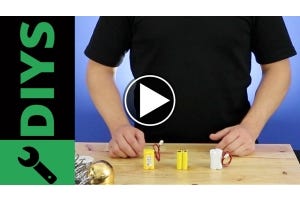How To Use Cables To Set Up A Solar Panel Array

Solar energy provides many benefits such as lower power bills, sustainability and emergency preparedness. It is also beneficial to the environment. Once a homeowner installs panels, he or she will have a continuous source of power as long as the sun is in the sky.
About Solar Panels
Most panels are made from crystalline silicon and gallium arsenide. The materials collect sunlight and transform it into electricity. To store the energy produced during the daylight hours, a battery must be connected. In addition, a charge controller will prevent the battery from acquiring too much power during the day. Once homeowners install their energy-gathering panels, they can store the energy for later use or feed it back into the panel, which will permit them to sell energy to the power company. During the installation, be sure to add an inverter to adapt the panel’s direct current to an 120-volt AC current.
Installation
A solar panel setup requires several products including a solar panel array, charge controller and DC electrical wire. Place the array in a sunny area to ensure that it receives the most sunlight possible. Also, the panels feature a mounting system, which allows homeowners to place them on a roof or the ground. During the installation, align the panels at a parallel angle to create a common output. The next step is to connect the output cable to the system’s charge controller. In addition, the homeowner will need to use an electrical wire to create a safe connection to the direct current. Be sure to place the controller section by the inverter or the battery bank.
Battery Bank Construction
To store energy, be sure to build a battery bank that contains the same amount of voltage as the panel output. Consider creating a bank with two batteries that are connected in a series because the setup will double each battery’s voltage. In addition, attach the negative terminal to the positive terminal of the other power source. With this arrangement, homeowners can make a bank of the voltage that they need from 6, 12, or 24-volt batteries. Keep in mind that the production of most solar arrays is 24 and 48 volts.
Controller Connection
With battery cables, attach the charge controller to the system’s battery terminals. Homeowners will also need to join the battery bank to an inverter with battery cables. Be sure to purchase cables that are the same size. If the intent is to send the stored solar energy back to the grid, then attach the charge controller to the inverter. In addition, connect the inverter’s output leads to the home’s hot and neutral supply lugs. Unless the homeowner is a licensed electrician, he or she should consider hiring one for this part of the installation. Moreover, a professional can review the system to confirm whether it has an automatic transfer switch. If it doesn’t, then he or she can install one. The device stops the panels from energizing the power line when the homeowner turns off the main power source.
Conclusion
By installing solar panels, homeowners can contribute positively to the environment. Furthermore, they will reduce their power bills and ensure that their home retains power during outages.






